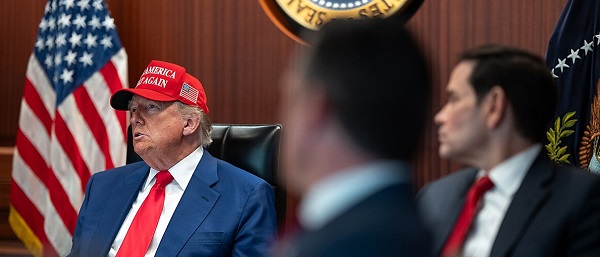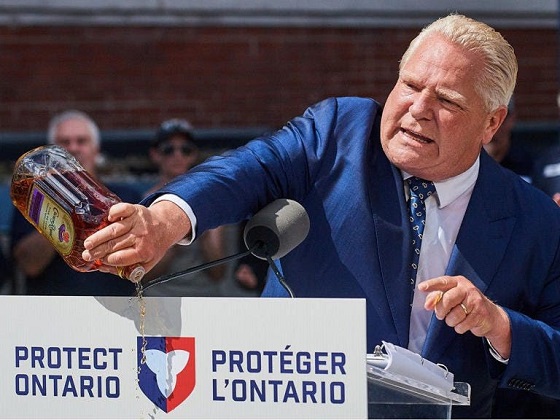Brownstone Institute
Trust “The Science”?

From the Brownstone Institute
BY
Thanksgiving weekend came and went in 2021. The soothsayers of Team Apocalypse were wrong again—the sky didn’t fall. Whole populations of families who dared to get together to celebrate were not wiped out. But that didn’t stop NIAID Director Dr. Anthony Fauci. The Covid fatality rate doesn’t hold a candle to the risk of standing between Dr. Fauci and a camera. After a few softball questions the television host of CBS’s Face the Nation asked Dr. Fauci about recent criticism of him from various corners. He replied:
So, it’s easy to criticize, but they’re really criticizing science because I represent science. That’s dangerous. To me, that’s more dangerous than the slings and the arrows that get thrown at me. I’m not going to be around here forever, but science is going to be here forever. And if you damage science, you are doing something very detrimental to society long after I leave. And that’s what I worry about.[i]
It is indeed dangerous to claim to represent science. Science doesn’t need sales reps, since it is the conceptualization of physical reality itself as determined by experiment and data. What Fauci truly represented is the authoritarian State with a capital “S.”
Emails released through the Freedom of Information Act show Fauci to be a manipulative man of politics, deftly brushing off lengthy diatribes against him or mustering forces to push back on Team Reality. It really is quite the position to be in as the highest paid federal employee in history to call upon the systematic enterprise of knowledge known as “science” to shield you from criticism.[ii]
The damage wrought upon our science as an actual institution is incalculable. As Dr. Jay Bhattacharya noted: “The current generation of top public health leaders will need to step down before trust is restored.”[iii]
The science is not what they say it is and you are not required to acquiesce to anyone’s determinations but your own. Indeed, when someone declares themselves to be the voice of authority in all things—run.
Science and the Application of Science Are Not the Same Thing
One keen realization our society must grapple with is separating the science from the application of that science. The science may indeed dictate that we experienced the spread of a highly transmissible deadly viral aerosolized respiratory pathogen, but it does not follow that you need to lose your job after that. Or that we ought to destroy the economy of a country. Or deprive a generation of children of proper learning.
Dr. Scott Atlas was lambasted by Team Apocalypse again and again for not being a virologist, but he was not sent to the White House to fix “the science”—he was there to fix the policy. Indeed, Dr. Atlas had keen and deep expertise in the application of science to public policy, something Dr. Fauci has failed at again and again in his career.
Our Constitution affords US citizens many enumerated rights and protections in our pursuit of happiness. Many of these endowed freedoms are couched in language specifically protecting us from the government writ large. While courts might attest to some extreme event placing some of these rights into dormancy, it did not give Dr. Fauci the right to put our rights, indeed our whole Constitution, into a coma.
The Institutions Lie. And Lie. And Lie.
Myriad once-trusted institutions have suffered greatly under the boom which Dr. Fauci and company lowered onto the American people and, frankly, the world.
The CDC has lost immense trust on all sides. From Dr. Redfield’s declaration that masks are better than vaccines to Dr. Walensky selling you a non-sterilizing sterilizing vaccine—this institution has wreaked the greatest havoc over the entire pandemic. They manipulated data, hid data, ignored data, invented data, deleted data, dismissed data, and all around succumbed to political pressure. Whether it was from teachers’ unions or a meddling White House, the CDC failed to provide any real leadership. With a budget of billions and over twenty thousand employees the amount of work they produced was puny and questionable at every step.
The National Institute of Health (NIH) is another behemoth that needs a thorough cleaning. Their (now) former director, Francis Collins, penned the infamous email calling out the signers of the Great Barrington Declaration.
“This proposal from the three fringe epidemiologists . . . seems to be getting a lot of attention—and even a co-signature from Nobel Prize winner Mike Leavitt at Stanford. There needs to be a quick and devastating published take down of its premises,” Collins ends the email: “Is it underway?”[iv]
If it wasn’t, the establishment institutional heads got in gear and made sure to jumpstart the process of attempting to destroy the reputations of the signers, all manifestly qualified and fantastically credentialled scientists and doctors.
The National Institute of Allergy and Infectious Diseases (NIAID) headed by Dr. Fauci is one of the key culprits stalling any real progress on trust and communication around these vital topics. Fauci and Collins are keenly involved with all areas of research in this federal healthcare monstrosity and influence millions of dollars in grants given every year. No wonder the spectrum of literature produced here did little to further any alternate views on lockdowns, masking, vaccines, and other COVID-19 implementations. The folks setting the policy also hold the purse strings.
It was obvious from the get-go that the structure of our county-centric administration of health policy was going to be problematic. These local health directors and advisors have little if any accountability. They are unelected bureaucrats and were given immense powers over the lives of citizens in their areas. The replete inconsistency with how federal health policy and information was conveyed to the public is an embarrassment. These county entities were given massive outlays of taxpayer dollars for the fruitless effort of contact tracing. The impact was not just on our wallets. As Jay Bhattacharya noted: “Hospital staffing shortages are at least in part due to rigidly enforced vaccine mandates and to mass asymptomatic testing and contact tracing. How many more people must suffer because of the monomaniacal focus on COVID at the expense of public health?” Contact tracing at the county level became a de facto quarantine machine, especially for students.
Most did it, many of us knowing it was pointless. But the pointlessness became the point. Comply, or you are a bad person. Comply or it’s no more school for you.
And comply many people did, thinking they would weather the madness, counting the cost on their hearts and spirits as worth the sacrifice for their children’s education. One more stricture, and the schools will open. Follow one more edict and the playground tape will come off. And so it went for two plus years. So it still goes in many places. We were duped, but we also duped ourselves.
Public Trust Was Destroyed
The impact on the public trust is massive. Curiously, after the 2009 H1N1 debacle, an article was published on the NIH website entitled: “’Listen to the People:’ Public Deliberation About Social Distancing Measures in a Pandemic”[v] The article notes the vital need for good and honest communication to the public about measures being taken the protect the citizenry. It notes: “Public engagement in ethically laden pandemic planning decisions may be important for transparency, creating public trust, improving compliance with public health orders, and ultimately, contributing to just outcomes.”
Ya’ think? This is something at which Fauci and company dramatically failed. At one point, early in the pandemic, Fauci advised against face masks but later admitted he was telling this “noble lie” to slow the impact on material needs and hospital settings. Honesty was a not a key feature of this pandemic.
The report continues: “We conducted focus groups with members of the public to characterize public perceptions about social distancing measures likely to be implemented during a pandemic. Participants expressed concerns about job security and economic strain on families if businesses or school closures are prolonged. They shared opposition to closure of religious organizations, citing the need for shared support and worship during times of crises.”
It was all right there. It is on the website of the National Institute of Health.
They ignored all of it.
The report concludes: “Social distancing measures may be challenging to implement and sustain due to strains on family resources and lack of trust in government.”
What a stark and terrible reminder that the institutions which prized themselves on public health damaged the public more than anything else. Your trust should be in the bedrock of our Constitution, not in some self-endowed title of “Science.”
Reprinted from the author’s Substack
Brownstone Institute
Bizarre Decisions about Nicotine Pouches Lead to the Wrong Products on Shelves

From the Brownstone Institute
A walk through a dozen convenience stores in Montgomery County, Pennsylvania, says a lot about how US nicotine policy actually works. Only about one in eight nicotine-pouch products for sale is legal. The rest are unauthorized—but they’re not all the same. Some are brightly branded, with uncertain ingredients, not approved by any Western regulator, and clearly aimed at impulse buyers. Others—like Sweden’s NOAT—are the opposite: muted, well-made, adult-oriented, and already approved for sale in Europe.
Yet in the United States, NOAT has been told to stop selling. In September 2025, the Food and Drug Administration (FDA) issued the company a warning letter for offering nicotine pouches without marketing authorization. That might make sense if the products were dangerous, but they appear to be among the safest on the market: mild flavors, low nicotine levels, and recyclable paper packaging. In Europe, regulators consider them acceptable. In America, they’re banned. The decision looks, at best, strange—and possibly arbitrary.
What the Market Shows
My October 2025 audit was straightforward. I visited twelve stores and recorded every distinct pouch product visible for sale at the counter. If the item matched one of the twenty ZYN products that the FDA authorized in January, it was counted as legal. Everything else was counted as illegal.
Two of the stores told me they had recently received FDA letters and had already removed most illegal stock. The other ten stores were still dominated by unauthorized products—more than 93 percent of what was on display. Across all twelve locations, about 12 percent of products were legal ZYN, and about 88 percent were not.
The illegal share wasn’t uniform. Many of the unauthorized products were clearly high-nicotine imports with flashy names like Loop, Velo, and Zimo. These products may be fine, but some are probably high in contaminants, and a few often with very high nicotine levels. Others were subdued, plainly meant for adult users. NOAT was a good example of that second group: simple packaging, oat-based filler, restrained flavoring, and branding that makes no effort to look “cool.” It’s the kind of product any regulator serious about harm reduction would welcome.
Enforcement Works
To the FDA’s credit, enforcement does make a difference. The two stores that received official letters quickly pulled their illegal stock. That mirrors the agency’s broader efforts this year: new import alerts to detain unauthorized tobacco products at the border (see also Import Alert 98-06), and hundreds of warning letters to retailers, importers, and distributors.
But effective enforcement can’t solve a supply problem. The list of legal nicotine-pouch products is still extremely short—only a narrow range of ZYN items. Adults who want more variety, or stores that want to meet that demand, inevitably turn to gray-market suppliers. The more limited the legal catalog, the more the illegal market thrives.
Why the NOAT Decision Appears Bizarre
The FDA’s own actions make the situation hard to explain. In January 2025, it authorized twenty ZYN products after finding that they contained far fewer harmful chemicals than cigarettes and could help adult smokers switch. That was progress. But nine months later, the FDA has approved nothing else—while sending a warning letter to NOAT, arguably the least youth-oriented pouch line in the world.
The outcome is bad for legal sellers and public health. ZYN is legal; a handful of clearly risky, high-nicotine imports continue to circulate; and a mild, adult-market brand that meets European safety and labeling rules is banned. Officially, NOAT’s problem is procedural—it lacks a marketing order. But in practical terms, the FDA is punishing the very design choices it claims to value: simplicity, low appeal to minors, and clean ingredients.
This approach also ignores the differences in actual risk. Studies consistently show that nicotine pouches have far fewer toxins than cigarettes and far less variability than many vapes. The biggest pouch concerns are uneven nicotine levels and occasional traces of tobacco-specific nitrosamines, depending on manufacturing quality. The serious contamination issues—heavy metals and inconsistent dosage—belong mostly to disposable vapes, particularly the flood of unregulated imports from China. Treating all “unauthorized” products as equally bad blurs those distinctions and undermines proportional enforcement.
A Better Balance: Enforce Upstream, Widen the Legal Path
My small Montgomery County survey suggests a simple formula for improvement.
First, keep enforcement targeted and focused on suppliers, not just clerks. Warning letters clearly change behavior at the store level, but the biggest impact will come from auditing distributors and importers, and stopping bad shipments before they reach retail shelves.
Second, make compliance easy. A single-page list of authorized nicotine-pouch products—currently the twenty approved ZYN items—should be posted in every store and attached to distributor invoices. Point-of-sale systems can block barcodes for anything not on the list, and retailers could affirm, once a year, that they stock only approved items.
Third, widen the legal lane. The FDA launched a pilot program in September 2025 to speed review of new pouch applications. That program should spell out exactly what evidence is needed—chemical data, toxicology, nicotine release rates, and behavioral studies—and make timely decisions. If products like NOAT meet those standards, they should be authorized quickly. Legal competition among adult-oriented brands will crowd out the sketchy imports far faster than enforcement alone.
The Bottom Line
Enforcement matters, and the data show it works—where it happens. But the legal market is too narrow to protect consumers or encourage innovation. The current regime leaves a few ZYN products as lonely legal islands in a sea of gray-market pouches that range from sensible to reckless.
The FDA’s treatment of NOAT stands out as a case study in inconsistency: a quiet, adult-focused brand approved in Europe yet effectively banned in the US, while flashier and riskier options continue to slip through. That’s not a public-health victory; it’s a missed opportunity.
If the goal is to help adult smokers move to lower-risk products while keeping youth use low, the path forward is clear: enforce smartly, make compliance easy, and give good products a fair shot. Right now, we’re doing the first part well—but failing at the second and third. It’s time to fix that.
Addictions
The War on Commonsense Nicotine Regulation

From the Brownstone Institute
Cigarettes kill nearly half a million Americans each year. Everyone knows it, including the Food and Drug Administration. Yet while the most lethal nicotine product remains on sale in every gas station, the FDA continues to block or delay far safer alternatives.
Nicotine pouches—small, smokeless packets tucked under the lip—deliver nicotine without burning tobacco. They eliminate the tar, carbon monoxide, and carcinogens that make cigarettes so deadly. The logic of harm reduction couldn’t be clearer: if smokers can get nicotine without smoke, millions of lives could be saved.
Sweden has already proven the point. Through widespread use of snus and nicotine pouches, the country has cut daily smoking to about 5 percent, the lowest rate in Europe. Lung-cancer deaths are less than half the continental average. This “Swedish Experience” shows that when adults are given safer options, they switch voluntarily—no prohibition required.
In the United States, however, the FDA’s tobacco division has turned this logic on its head. Since Congress gave it sweeping authority in 2009, the agency has demanded that every new product undergo a Premarket Tobacco Product Application, or PMTA, proving it is “appropriate for the protection of public health.” That sounds reasonable until you see how the process works.
Manufacturers must spend millions on speculative modeling about how their products might affect every segment of society—smokers, nonsmokers, youth, and future generations—before they can even reach the market. Unsurprisingly, almost all PMTAs have been denied or shelved. Reduced-risk products sit in limbo while Marlboros and Newports remain untouched.
Only this January did the agency relent slightly, authorizing 20 ZYN nicotine-pouch products made by Swedish Match, now owned by Philip Morris. The FDA admitted the obvious: “The data show that these specific products are appropriate for the protection of public health.” The toxic-chemical levels were far lower than in cigarettes, and adult smokers were more likely to switch than teens were to start.
The decision should have been a turning point. Instead, it exposed the double standard. Other pouch makers—especially smaller firms from Sweden and the US, such as NOAT—remain locked out of the legal market even when their products meet the same technical standards.
The FDA’s inaction has created a black market dominated by unregulated imports, many from China. According to my own research, roughly 85 percent of pouches now sold in convenience stores are technically illegal.
The agency claims that this heavy-handed approach protects kids. But youth pouch use in the US remains very low—about 1.5 percent of high-school students according to the latest National Youth Tobacco Survey—while nearly 30 million American adults still smoke. Denying safer products to millions of addicted adults because a tiny fraction of teens might experiment is the opposite of public-health logic.
There’s a better path. The FDA should base its decisions on science, not fear. If a product dramatically reduces exposure to harmful chemicals, meets strict packaging and marketing standards, and enforces Tobacco 21 age verification, it should be allowed on the market. Population-level effects can be monitored afterward through real-world data on switching and youth use. That’s how drug and vaccine regulation already works.
Sweden’s evidence shows the results of a pragmatic approach: a near-smoke-free society achieved through consumer choice, not coercion. The FDA’s own approval of ZYN proves that such products can meet its legal standard for protecting public health. The next step is consistency—apply the same rules to everyone.
Combustion, not nicotine, is the killer. Until the FDA acts on that simple truth, it will keep protecting the cigarette industry it was supposed to regulate.
-

 Business1 day ago
Business1 day agoTrump’s Tariffs Have Not Caused Economy To Collapse
-

 Daily Caller2 days ago
Daily Caller2 days agoNigeria Would Welcome US Intervention In Massacre Of Christians By Islamic Terror Groups
-

 Alberta19 hours ago
Alberta19 hours agoAlberta government’s plan will improve access to MRIs and CT scans
-

 Alberta2 days ago
Alberta2 days agoCanada’s heavy oil finds new fans as global demand rises
-

 Daily Caller1 day ago
Daily Caller1 day agoTrump Reportedly Planning Ground Troops, Drone Strikes On Cartels In Mexico
-

 Automotive2 days ago
Automotive2 days agoCanada’s EV experiment has FAILED
-

 Bruce Dowbiggin2 days ago
Bruce Dowbiggin2 days agoA Story So Good Not Even The Elbows Up Crew Could Ruin It
-

 Addictions2 days ago
Addictions2 days agoThe War on Commonsense Nicotine Regulation











